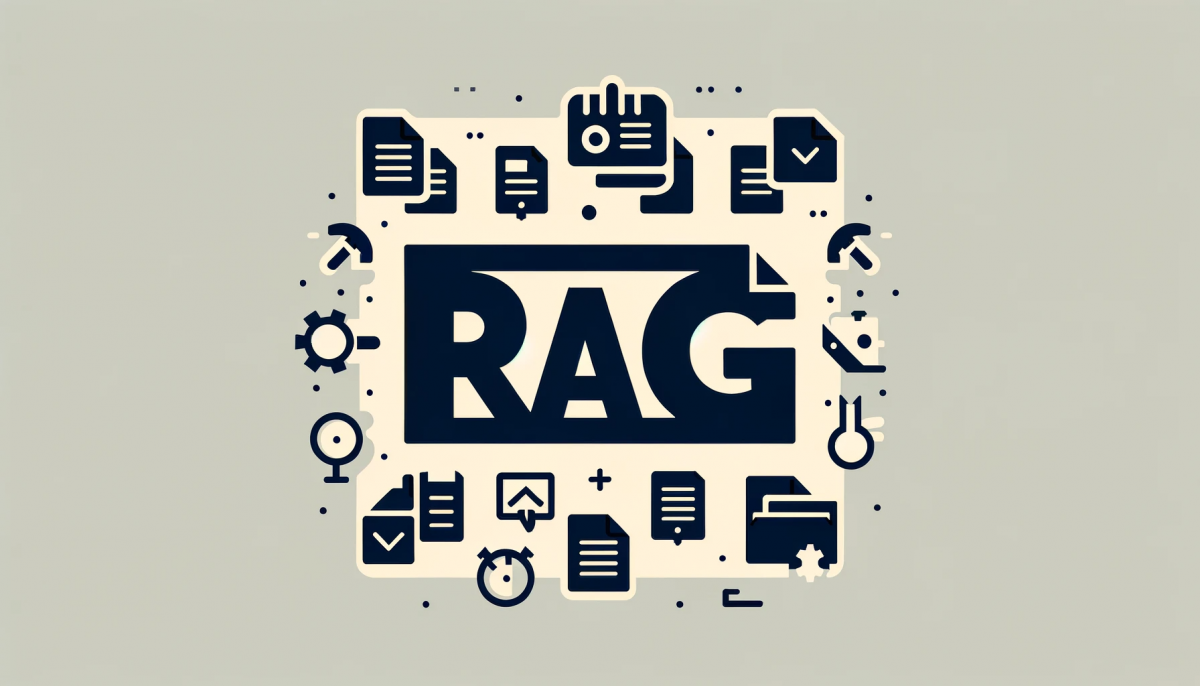Ultimate Guide on Retrieval-Augmented Generation (RAG) – Part 1

Ultimate Guide on Retrieval-Augmented Generation (RAG) – Part 1
Introduction
In the ever-expanding universe of artificial intelligence, large language models (LLMs) have taken center stage. These sophisticated AI systems power everything from chatbots to content creation tools, offering unprecedented capabilities in understanding and generating human-like text. However, like any pioneering technology, they are not without their limitations. Inaccuracies and outdated information often mar the user experience. This brings us to an intriguing development in AI – the advent of the Retrieval-Augmented Generation (RAG).
What is Retrieval-Augmented Generation (RAG)?
Retrieval-augmented generation stands at the forefront of AI innovation. It’s a groundbreaking approach that enhances traditional LLMs by integrating a retrieval mechanism. This mechanism allows the model to pull in the most relevant and up-to-date information from a vast database, essentially ‘augmenting’ the model’s knowledge base in real time. RAG specifically addresses two critical challenges: sourcing accurate information and ensuring that the knowledge is current.
The Mechanics of RAG

Imagine a user posing a question to an AI model about the latest scientific discoveries. In a traditional LLM setup, the response is generated based solely on pre-existing training data, which might be outdated. Here’s where RAG changes the game. The process begins with the user’s query, triggering the model to sift through a plethora of recent documents, articles, and data. It retrieves the most relevant and current information before synthesizing an informed response. This dynamic process not only boosts accuracy but also ensures the response reflects the latest knowledge.
RAG in Action: A Case Study
To highlight the capabilities of RAG (Retrieval-Augmented Generation), consider a question about the number of moons in our solar system. A conventional Language Learning Model (like a human brain) might respond based on immediate recall or, in the case of an LLM, from potentially outdated articles it was trained on. This could lead to irrelevant or inaccurate answers.
In contrast, a RAG-enhanced model dynamically retrieves the latest astronomical data to provide an accurate, up-to-date count of the moons. This feature demonstrates RAG’s remarkable ability to stay abreast of ongoing scientific advancements and incorporate new information into its responses
The Dual Edges of RAG
While RAG significantly elevates the capabilities of LLMs, it’s important to acknowledge its dual nature. On the one hand, RAG helps mitigate issues like hallucinations (false information generation) and data leakage, leading to more trustworthy AI interactions. On the other, the quality of responses is heavily dependent on the quality of the retrieved data. Thus, ensuring a robust and reliable data source is paramount.
Challenges of the Naive RAG system:
Getting back to the image reference again:

Each of the above-mentioned steps has challenges:
- Parsing and Chunking: This step involves dealing with the inherent structure of real-world documents, where relevant information might be nested within various sub-sections. The challenge lies in effectively parsing the structure to accurately chunk the data, ensuring that context is maintained even when similarities are not apparent.
- Creating Embeddings: At this stage, the method of creating embeddings is crucial as it impacts the subsequent retrieval quality. Decisions need to be made regarding the granularity of chunking—whether it should be by paragraph, line, or including metadata. Additionally, there might be a need for sliding window chunks to preserve the context from preceding text.
- Retrieval: This is a critical step where the goal is to retrieve the most relevant embeddings in response to a user query. Retrieval methods extend beyond simple cosine similarity, encompassing various algorithms to ensure that the results align closely with the query’s intent.
- Synthesis: The final step involves synthesizing the retrieved information into a coherent response. The way in which the prompt is constructed for the language model can significantly affect the quality and relevance of the response. Although this might be the least complex challenge, it requires careful consideration to achieve the best results.
Each of these steps must be meticulously executed to handle complex queries and deliver accurate and contextually relevant responses.
In Conclusion: The Dawn of a New AI Era
This exploration into Retrieval-Augmented Generation marks just the beginning of a journey into the future of AI-driven conversations. RAG’s integration into LLMs is a significant leap forward, offering a glimpse into an era where AI can converse, inform, and assist with an unprecedented level of accuracy and relevance.
In Part 2 of this series, we delve deeper into the evaluation of the RAG pipeline and, eventually we address various challenges mentioned in the article based on the evaluation metrics to improve your responses drastically










